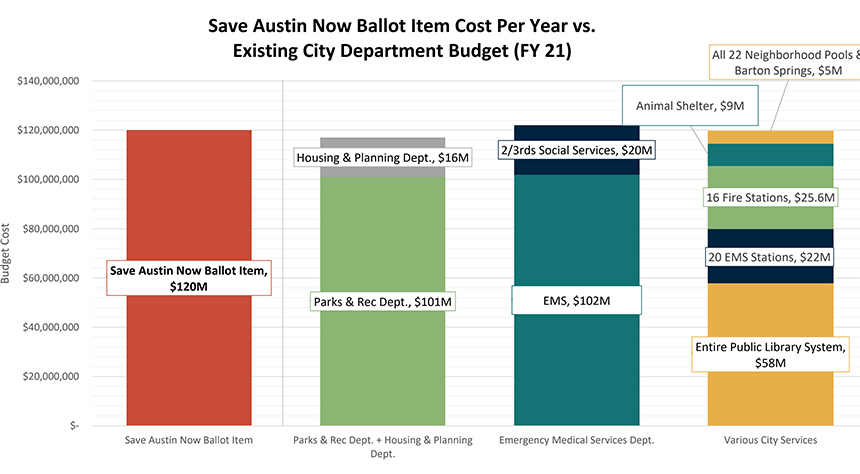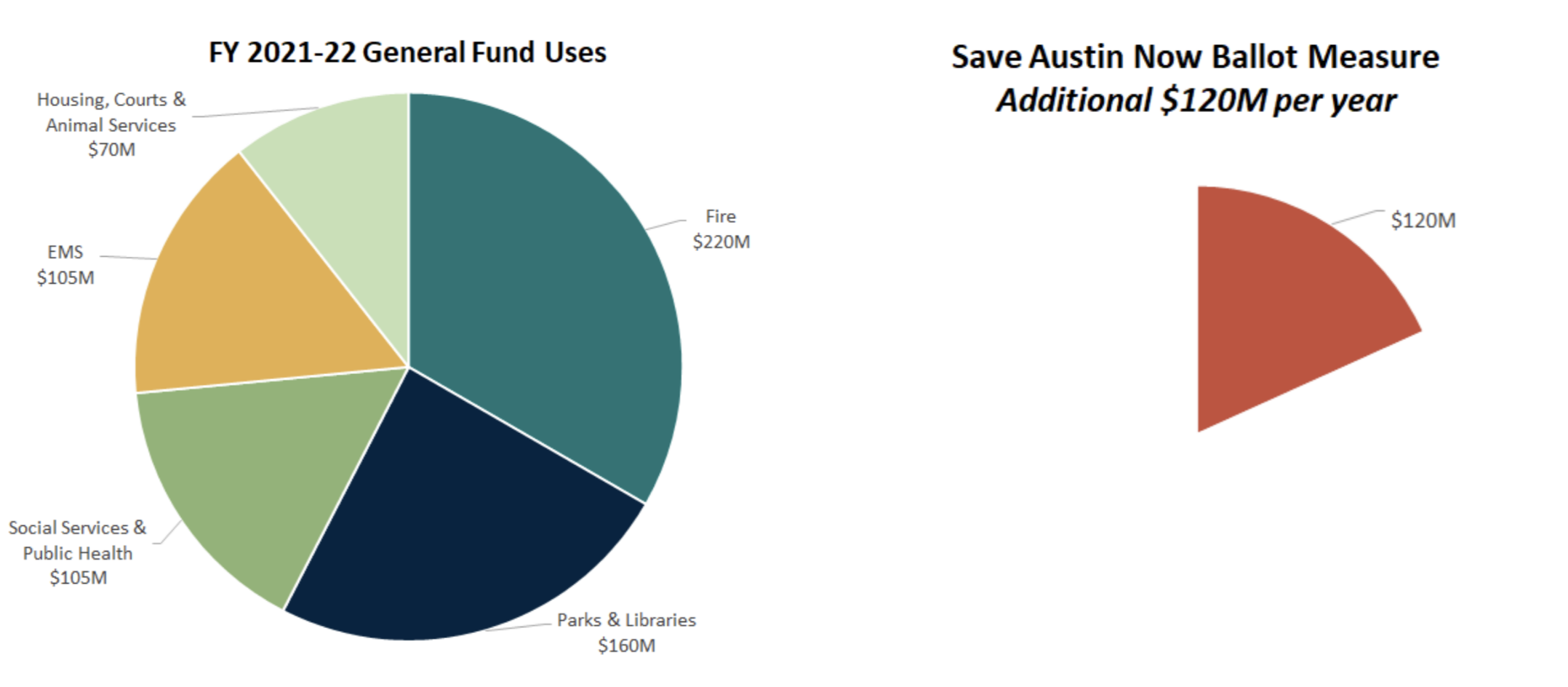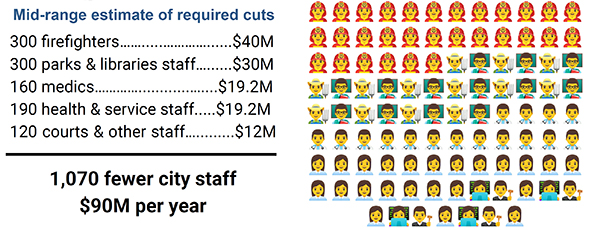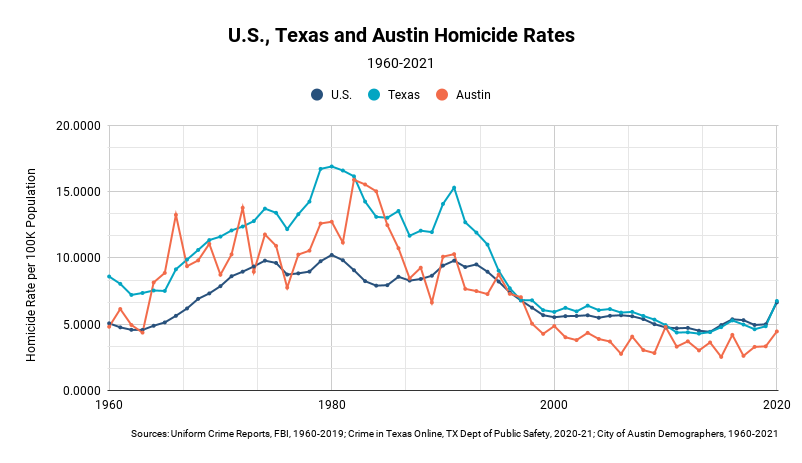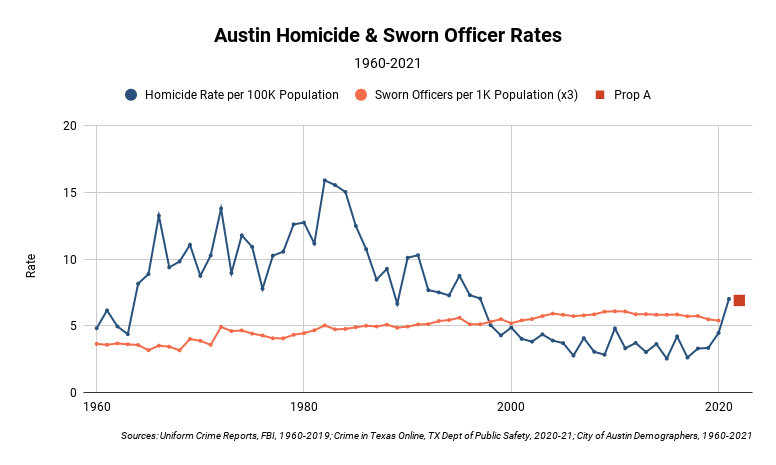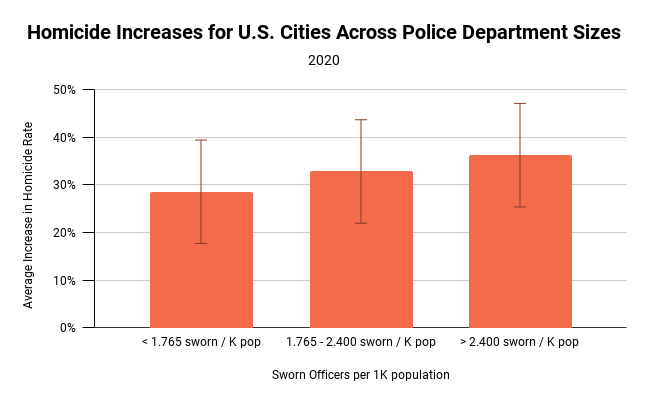Voters spurned Prop A 69% to 31% because it forced unacceptable tradeoffs.
It would have forced Austin to cut essential services like medics, firefighters, park rangers and more, and redirect hundreds of millions to the police department, with zero accountability.
Learn more about why Austinites said, “No Way on Prop A!”
What was Proposition A on the November 2, 2021 ballot?
Prop A is a wolf in sheep’s clothing.
Prop A would have:
• Forced Austin to immediately hire up between 316 to 680 more police officers this year, which could cost the City $271.5 million to $598.9 million over the next 5 years.
• Required front-line officers to spend at least 35% of their time not responding to 911 calls.
If this unfunded mandate passed, the city would have to cut mental health, parks, and other essential services, and potentially lay off firefighters, medics, and 911 call takers. That’s not how to protect public safety.
What was the fiscal impact of Prop A?
The City of Austin Financial Services Department says the estimated financial impact of Prop A could be between $271.5 million to $598.9 million over the next 5 years. The police department has already been fully funded, and all cuts from last summer restored, plus millions more. The impact of Prop A is to vastly further increase the size of police staff at the expense of all other kinds of staff needed to make us safe and preserve the beauty of our city.
If Prop A became law, it would lead to budget cuts & elimination of city services like mental health care, parks, libraries, and much more.
Assuming the impact is somewhere in the middle of the range, Prop A will result in a thousand layoffs, steep tax increases for working Austinites or both.
We need to comprehensively hire all kinds of staff, including park rangers, police, EMS and Fire personnel, and Prop A means cuts to all departments except police. Austin already spends more on its police force per resident than any other major city in Texas. In the new budget, the police department’s share is $442M – more than ever in Austin’s history.
What would Prop A defund?
Prop A would have forced the City to cut essential services that make us safer.
The city would have made many hard choices if this passed. If we assume that one reasonable approach would be across the board cuts so that no one department is eliminated, then the cuts could look like this:
Isn’t Austin safe?
Was Prop A based on best practices?
No. Austin’s own interim Chief of Police does not support Prop A’s arbitrary staffing metrics:
“I’ve been very, very public, both internally and externally, (this arbitrary staffing standard) is not something I can get behind,” said Austin Interim Police Chief Joe Chacon in the Austin American-Statesman.
Dr. Bill Spelman, a former Austin City Council Member and Professor of Criminology, is a national expert in police staffing. He says Prop A will not work and will take away solutions that actually address public safety.
“The 2:1000 metric isn’t a best practice… there could be no limit to the number of officers APD could demand each budget cycle,” Spelman said to KVUE.
Among 67 of the biggest U.S. cities, research shows no correlation between the size of the police force and crime rates. (Charts courtesy Dr. Bill Spelman)
How do we get a fast, appropriate response to every 911 call?
Whenever someone calls 911 for a public safety concern, they should receive a timely, appropriate response.
The vast majority of 911 calls do not result in a police report, let alone a criminal charge. That’s because most 911 calls are not about criminal behavior. Yet for years, we only sent police because they were the only staff we had.
Now, we are better matching the response we send to the caller’s needs. For the past two years, Austin has increased EMS staffing, and has added a 4th option (“mental health services”) in order to get mental health professionals to mental health calls instead of police.
Because of its fiscal impact, Prop A would have forced us to fire the kind of responders we need most — paramedics, clinicians and social service employees, and even 911 call takers, and only send police regardless of the nature of the call.
In addition, Prop A required front-line officers to spend at least 35% of their time not responding to 911 calls.
We need to hire more EMS, firefighters, violence prevention officers, mental health care professionals, and police officers to improve safety and response times.
How can Austin invest in comprehensive public safety & address violent crime?
Austin’s safety needs vary greatly. Whether Austin is facing a pandemic, housing crisis, or winter storm, we need a comprehensive approach to ensure every Austinite is safe. Austin has invested in all different kinds of public safety services. Prop A put these investments at risk.
• Ambulances to handle COVID-19 and other health crisis
• Family violence shelter
• Mental health services
• Substance use programs
• Housing for homelessness
• Park rangers
• Gun locks and safety education
• Gun violence reduction workers
The nationwide homicide increase is a serious problem, and we need to respond to it. Just adding hundreds of millions of dollars to the police department won’t help much, but if we stop to understand what’s driving this increase we can develop an effective response.
1) Most crime in Austin can be attributed to a small number of problem people, especially vulnerable victims, or crime-prone places and situations;
2) Law enforcement resources alone will not be enough to solve the problem, and other city departments, social service agencies, businesses, and the public will need to participate; and
3) All participants, will need to stretch beyond their ordinary routines to address the problem.
This requires more thought and attention than Prop A’s “more of the same” approach, but it’s worked to reduce violence in other cities, and it can work in Austin. With a new Office of Violence prevention just staffing up, we already have the infrastructure in place to take a more productive approach to local violent crime.
